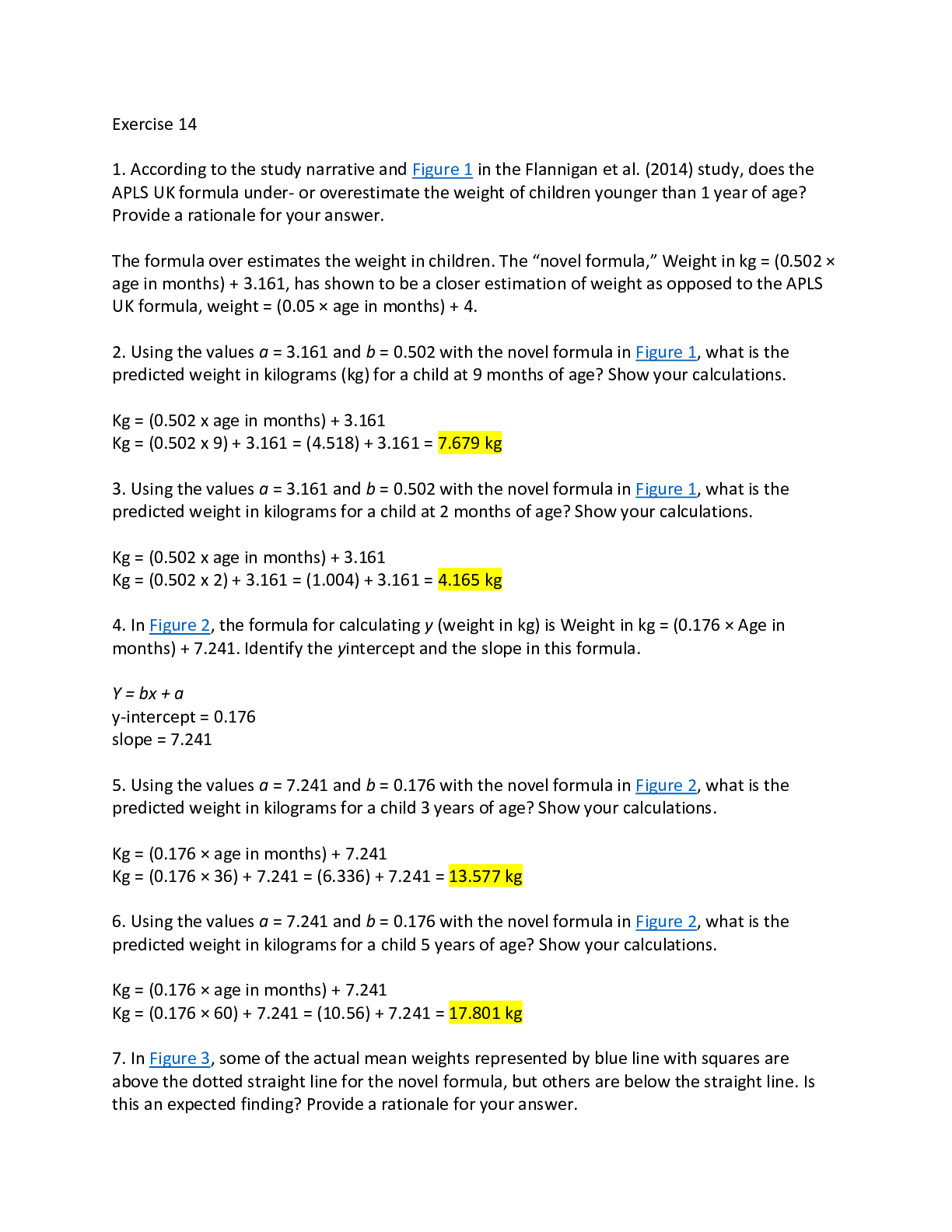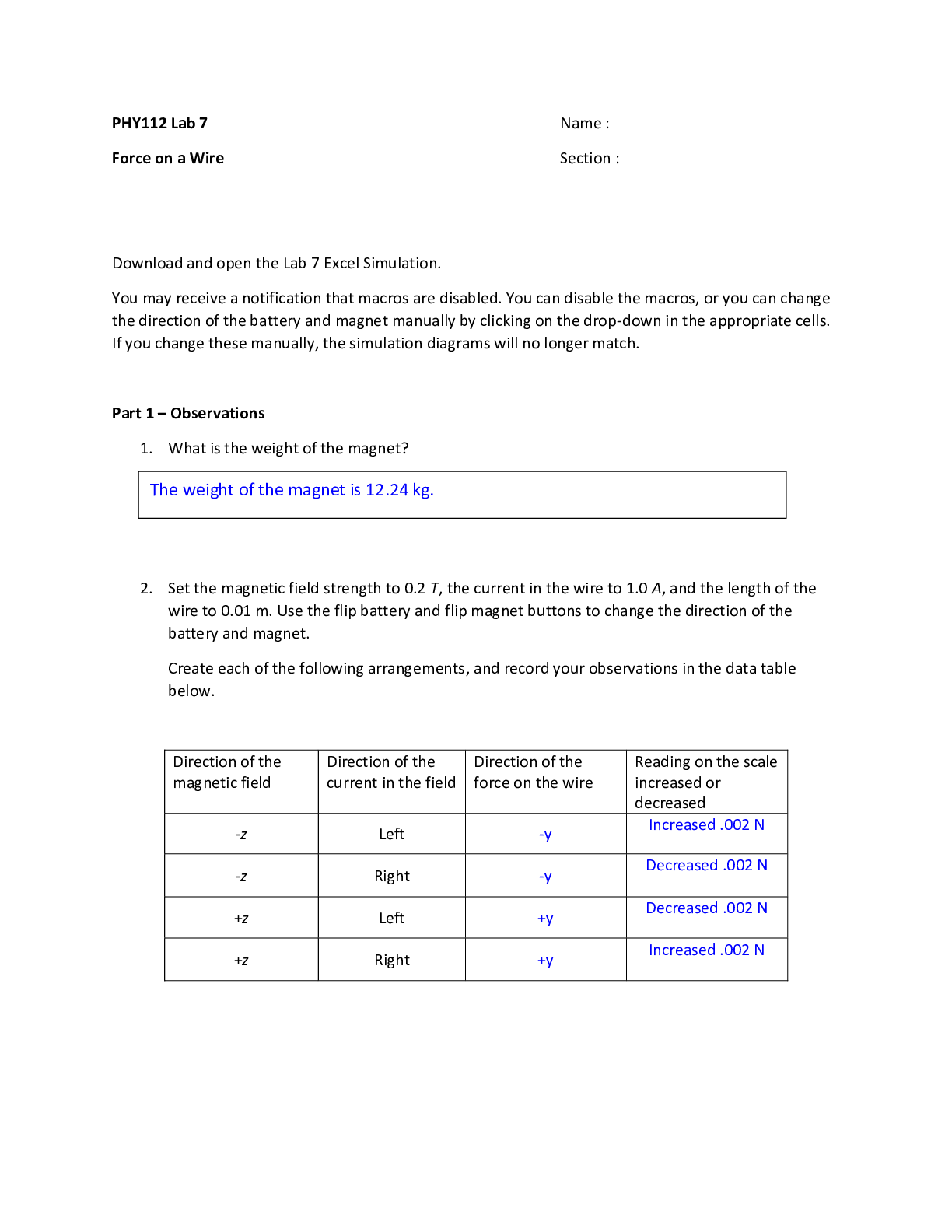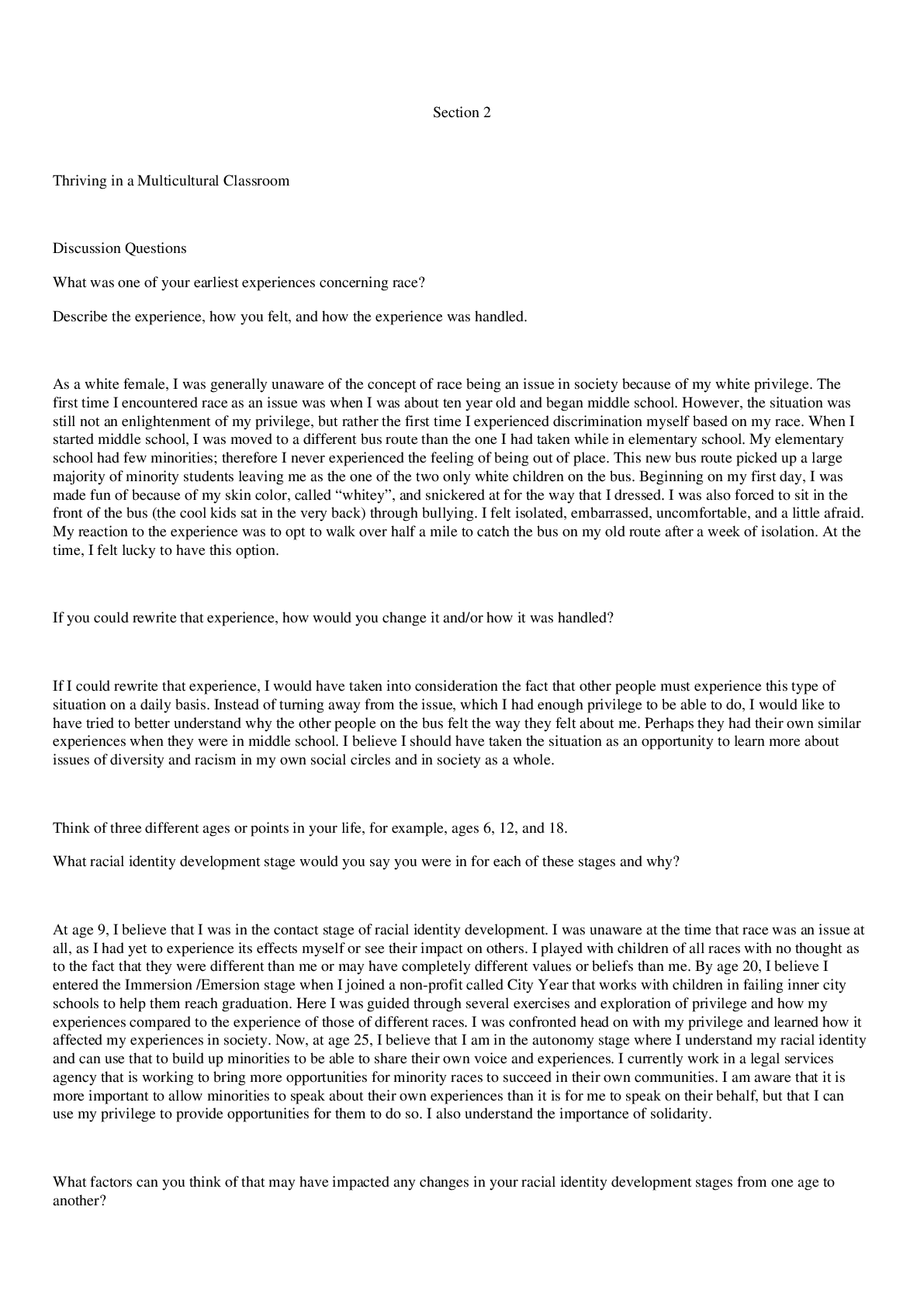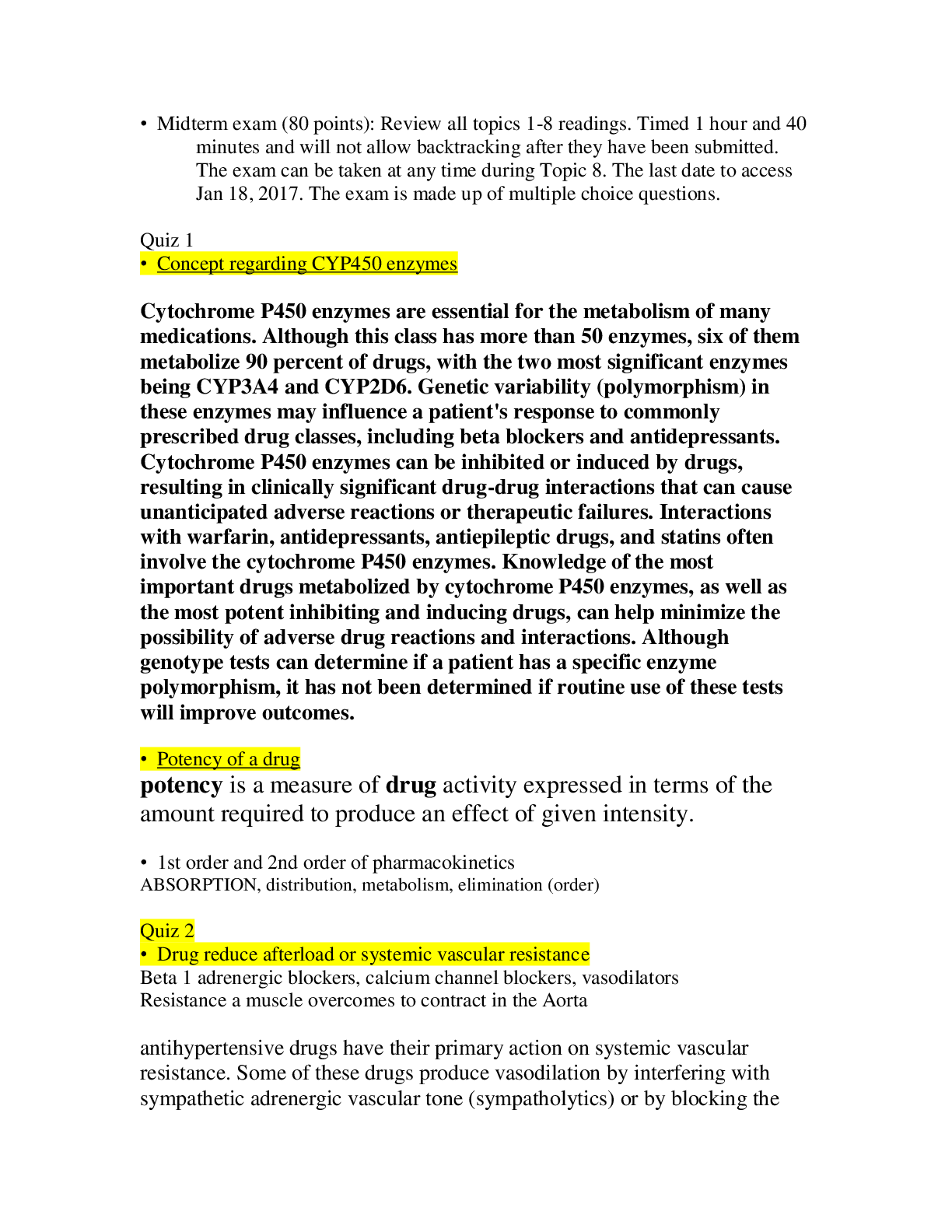*NURSING > STUDY GUIDE > PN3_Final_Exam_Study_Guide_for_Students. (All)
PN3_Final_Exam_Study_Guide_for_Students.
Document Content and Description Below
Autonomy: implies that patients are treated as autonomous individuals capable of making informed decisions about their care; also referred to as self-determination or self-management ⦁ The client�... ��s right to autonomy means that the client must be fully informed as to his or her diagnosis and treatment options Beneficence: promotes positive actions to help others Superior Vena Cava Syndrome (SVCS): oncological emergency; compression or obstruction of the super vena cava by a tumor ⦁ S/S: jugular vein distention, edema of the face (especially periorbital edema), tightness of collar, erythema of upper body, edema in hands and arms, dysphagia, dyspnea, engorged blood vessels, stridor; above the waist symptoms ⦁ If a client is diagnosed with superior vena cava syndrome, the nurse needs to ask about advance directives ⦁ Improvement of superior vena cava syndrome: hands are less swollen Complications of Interleukin Therapy: interleukins can cause capillary leak syndrome and fluid shifting, leading to intravascular volume depletion ⦁ Capillary leakage syndrome can cause widespread edema formation ⦁ Most important assessment is: assessing blood pressure ⦁ Interleukin-2; what to report to provider immediately=crackles heard at the lower scapular border Rituximab (monoclonal antibody): allergic reactions can occur because of the incorporation of some nonhuman proteins. ⦁ Prevents the start of cell division in cancer cells ⦁ Essential to assess for an allergy during an infusion ⦁ Assessment finding that requires rapid action=shortness of breath ⦁ Nursing assessment is key for recognition of potentially life-threatening allergic reactions 7 Warning Signs of Cancer ⦁ Change in bowel or bladder ⦁ A sore that does not heal ⦁ Unusual bleeding or discharge ⦁ Thickening or lump in breast or elsewhere ⦁ Indigestion ⦁ Obvious change in warts or moles ⦁ Nagging cough or persistent hoarseness Patient Who is Receiving Chemo and a WBC of 1000 ⦁ Neutropenic precautions Staging Cancer ⦁ Tumor staging (T) ⦁ TX: unable to evaluate the primary tumor; tumor cannot be measured ⦁ T0: no evidence of primary tumor ⦁ Tis: tumor in situ; still confined to site from where it started and has not spread ⦁ T1, T2, T3, T4: size and extent of tumor ⦁ Metastasis (M) ⦁ MX: presence of distant metastasis cannot be assessed ⦁ M0: no distant metastasis ⦁ M1: distant metastasis ⦁ Example: TISN0M0=there are no distant metastases noted in the report Patient taking Progestin; when to notify the physician ⦁ All clients receiving Progestin are at risk for thromboembolism ⦁ Red, warm, swollen calf N/I for chemo patient experiencing vomiting before treatment ⦁ Patient should eat small, frequent meals ⦁ Do not offer food and beverages during chemotherapy ⦁ Give prescribed antiemetics 1 hour before chemo ⦁ Zofran is the most common anti-nausea medication Complications of Patients Having External Beam Radiation Therapy ⦁ Radiation to the abdomen will affect organs in the radiation path, such as the bowel and cause frequent diarrhea. Careful cleaning of this area will help decrease the risk for skin breakdown and infection Debulking Procedure: reduces the size of the tumor and makes radiation and chemo more effective; they do not control tumor growth ⦁ Patient education: tumor size will decrease and this will improve the effects of other therapy Hospice Care: facilitates quality of life and a peaceful death Hospice care focuses on a holistic approach to health care. It is designed not to hasten death, but rather relieve symptoms Palliative Care: provides an increased level of personal care designed to manage symptom distress ⦁ Care can be in any stage of a serious illness, care is not limited by specific time periods, and provides an increased level of personal care designed to manage symptom distress; focuses on pain control ⦁ The goal of palliative care is to provide the greatest degree of comfort possible and help the dying person enjoy whatever time is left. Osmotic Diuretic to Decrease ICP ⦁ Mannitol Two medications used for post-coronary stents and generic names ⦁ Clopidogrel and Brulenta Prevention of Cross Contamination ⦁ How to prevent cross contamination: change gloves between wound care on different parts of the body [Show More]
Last updated: 2 years ago
Preview 1 out of 9 pages

Buy this document to get the full access instantly
Instant Download Access after purchase
Buy NowInstant download
We Accept:

Reviews( 0 )
$15.00
Can't find what you want? Try our AI powered Search
Document information
Connected school, study & course
About the document
Uploaded On
Mar 23, 2021
Number of pages
9
Written in
Additional information
This document has been written for:
Uploaded
Mar 23, 2021
Downloads
0
Views
43

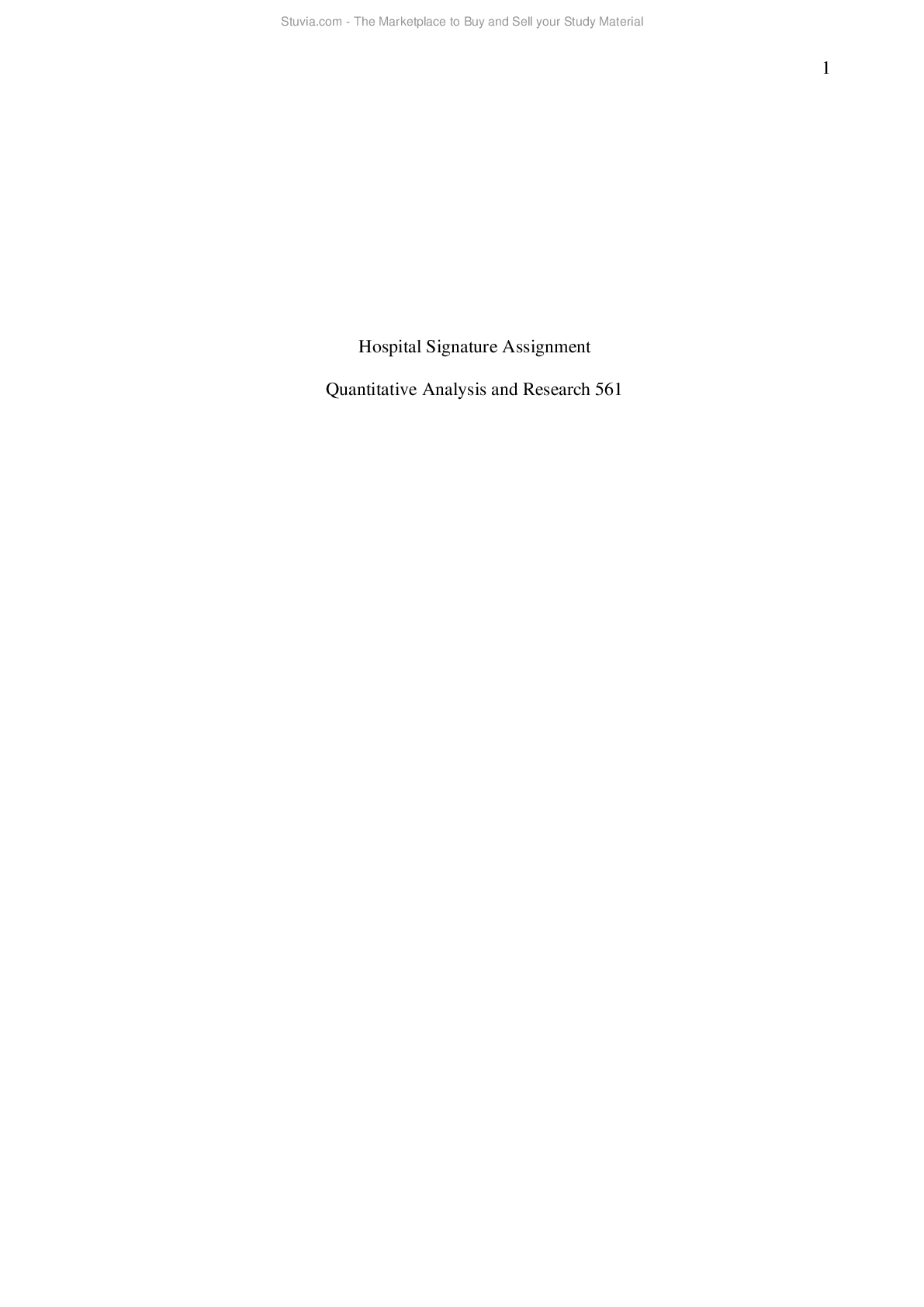

_removed.png)









